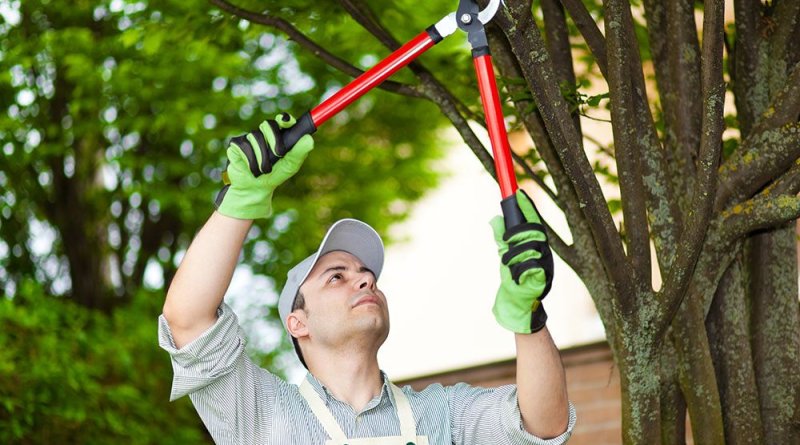The Ultimate Guide to Tree Trimming: Techniques, Benefits, and Safety Measures
Trees, with their towering majesty and lush foliage, are vital components of our environment. Beyond their aesthetic appeal, trees offer numerous benefits, such as providing oxygen, reducing air pollution, and supporting biodiversity. However, to maintain their health and enhance their longevity, proper tree trimming is essential. In this comprehensive guide, we’ll delve into the techniques, benefits, and safety measures associated with tree trimming.
Understanding Tree Trimming
1. What is Tree Trimming?
Tree trimming, also known as pruning, is the deliberate removal of specific branches or stems from a tree to enhance its structure, health, and appearance. This arboricultural practice involves cutting away dead, damaged, or diseased branches, as well as shaping the tree to promote optimal growth.
2. Techniques of Tree Trimming
Tree trimming is both an art and a science, involving various techniques depending on the tree species, size, and desired outcome. Here are some common techniques:
- Crown Thinning: This involves selectively removing branches from the upper portion of the tree’s canopy. It improves light penetration and air circulation, reducing the risk of diseases.
- Crown Raising: The lower branches are removed to provide clearance for structures, pedestrians, or vehicles beneath the tree.
- Crown Reduction: This technique reduces the overall size of the tree’s canopy by selectively removing branches. It’s often done to maintain the tree’s shape and prevent it from interfering with structures.
- Deadwooding: Removal of dead or dying branches to prevent safety hazards and promote overall tree health.
- Vista Pruning: Trimming to enhance a specific view or preserve sightlines.
- Pollarding: A severe form of pruning where the upper branches are removed, promoting a dense head of foliage.
- Espaliering: Training a tree to grow flat against a structure or along a trellis for space efficiency.
The Benefits of Tree Trimming
1. Promotes Tree Health
Regular trimming removes dead or diseased branches, preventing the spread of diseases and improving overall tree health. Proper pruning also encourages the growth of new, healthy branches.
2. Enhances Aesthetic Appeal
Trimming shapes the tree, making it more visually appealing. Well-maintained trees can significantly enhance the beauty of your landscape, increasing property value and curb appeal.
3. Encourages Fruit Production
For fruit-bearing trees, proper pruning is crucial for maximizing fruit production. It allows sunlight to reach all parts of the tree, promoting the development of healthy fruits.
4. Prevents Safety Hazards
Overgrown or weakened branches pose a risk of falling, especially during storms. Tree trimming removes potential hazards, making the environment safer for people and property.
5. Improves Air Circulation
Thinning the crown of a tree enhances air circulation, reducing the risk of fungal infections. This is particularly important in humid climates where moisture can contribute to the growth of harmful fungi.
6. Manages Tree Size
For urban landscapes, controlling the size of trees is essential. Regular trimming helps prevent trees from outgrowing their allotted space and causing problems with structures or utility lines.
Safety Measures for Tree Trimming
Tree trimming, while beneficial, can be hazardous without proper precautions. Follow these safety measures to ensure a secure trimming process:
1. Wear Protective Gear
Always wear personal protective equipment (PPE) such as a helmet, safety glasses, gloves, and steel-toed boots to protect yourself from falling debris.
2. Use the Right Tools
Ensure that you use the appropriate tools for the job, including sharp and well-maintained pruning shears, loppers, and saws. Using the right tools makes the process more efficient and reduces the risk of accidents.
3. Assess the Surroundings
Before starting the trimming process, assess the area around the tree. Identify potential hazards such as power lines, structures, or obstacles that may impede the process.
4. Know Your Limits
For large or challenging tree trimming tasks, consider hiring a professional arborist. They have the expertise and equipment to handle complex jobs safely.
5. Follow Proper Cutting Techniques
When making cuts, use the three-cut technique for larger branches to prevent bark tearing. Make an undercut first, followed by an uppercut, and finally, a third cut to remove the remaining stub.
6. Be Mindful of Wildlife
Check for nesting birds or other wildlife before starting the trimming process. Avoid trimming trees during nesting seasons to protect wildlife habitats.
Conclusion
Tree trimming is a crucial aspect of arboriculture that benefits both the health of trees and the safety of the surrounding environment. By understanding the techniques involved, recognizing the benefits, and following essential safety measures, you can ensure a thriving and visually pleasing landscape. Whether you’re a homeowner looking to enhance your property or a professional arborist, Expert Tree Maintenance contributes to the well-being of our green companions and the communities they adorn.

